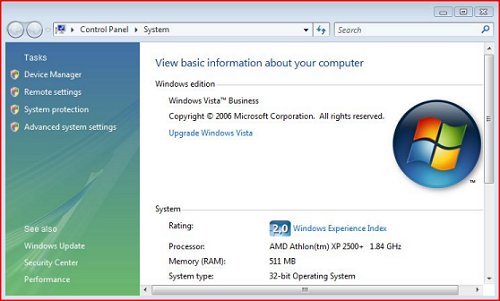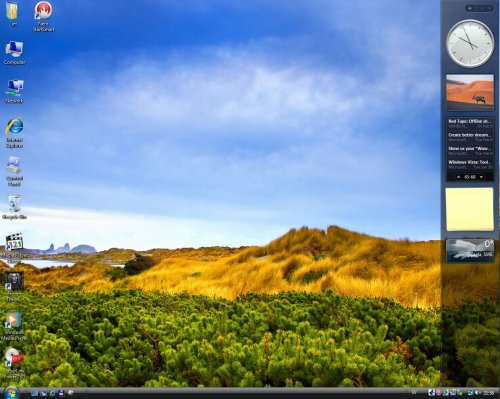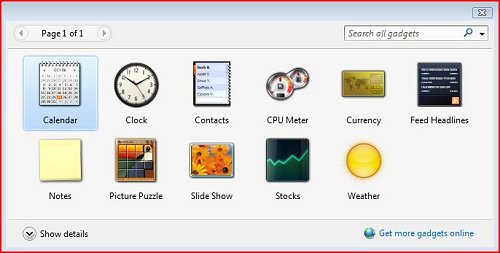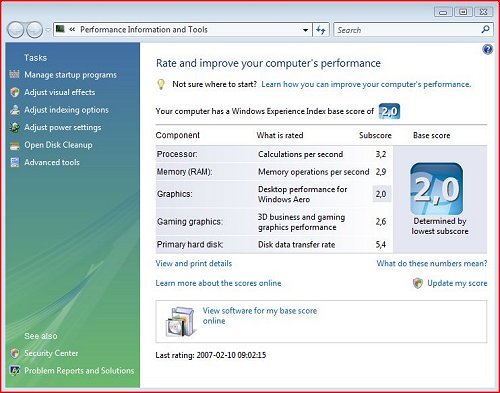PC we used has AMD Athlon 2500, Barton core and Geforce 5200FX graphics card with 512 RAM. Geforce 5200FX is the weakest DirectX 9 compatible card and a precondition for the new Windows interface “Aero Glass”. And how does it work on such PC? Well, read on. Windows Vista Business edition has been available for a while for Microsoft Developer Network Academic Alliance (MSDNAA) users, which mainly means students and scientists all over the world.
As of 30th January a regular consumer could buy him/herself a copy of Microsoft’s new OS. That's what we did. The first thing we notice is the installation speed of Microsoft’s new baby. A really annoying part of Windows XP installation was the damn blue screen. This is now history as with Windows Vista installation disk you can forget about that torture. Good old DOS and its partitioning program from Windows NT 4.0 is now gone. With Vista you can forget about DOS even during installation it is all in GUI (Graphics User Interface). Partitioning is much easier and the whole installation procedure is easy and intuitive.
Although there are not many bad things we can say about Vista installation interface, it does have a bit of a retro look, but then again retro can also mean stylish. We can see it with many products today. One thing that will make the owners of motherboards with older chipsets, SATA and RAID controllers happy, this time you wont have to push F6 button in order to insert your disk with SATA drivers. SATA drivers and most of the Raid drivers are now supported by the new OS.
We finally lived to see that day even though Service pack 2 solved most of these problems anyhow. Instead of having installation process testing your concentration and reflex speed the user is now welcomed with a sexy graphics interface. Unfortunately any other Linux has a GUI installation for years now, and there are no more any specific time frames when you are supposed to push a specific button to install your piece of hardware.
Days of OS asking you if you are crazy because you want to install your OS on a non existing HDD are over. I am sure there is a number of people who went through the hell of the F6 button, and I am sure they will know to appreciate Vista installation interface.
Ok, so after we have chosen desired partition, installation moves on to the next step and ask for a serial number, desired user name and your location, so that your Windows watch is set up properly. During the first restart one can notice how Vista is staying away from older systems you might have kept on your PC for whatever your reason might be. Vista will on very start up offer you a screen where you can choose if you will start Vista or any other OS you might have.
If you had multi boot, you get to choose between your XP and 2000 or if you only had one OS then you are redirected directly to it. You can easily avoid these "complications" if you give your trust to Vista and format all of your drives that might contain former versions of Windows and do the clean install. After surprisingly fast installation, your system is ready to show you what it’s made of.
The looks of your new OS automatically adapt to capabilities of your hardware. If you go right click on your My Computer icon and then Properties in a drop down menu, you will be able to see what grade Vista gave to your hardware.
The grades are given for different hardware categories (memory, graphics system, HDD, processor) and overall grade Vista will give you based on the "weakest link" principle.

Our system with Athlon 2500+ that worked at 1833 MHz, GPU Geforce 5200 FX, 512 MB DDR333 RAM and 250GB PATA HDD, got the lowest grade in memory test, so we got a 2 as an overall score. Besides that this grading system also gives a suggestion which part of the computer should be improved so Vista could work faster and more stable. In our case we need a bit better GPU and at least 1GB RAM.
In a number of new capabilities and options that drain your PCs power to the bits, first thing that user gets to notice is the Aero glass interface. Although our testing configuration had DirectX9 GPU and is capable of running Aero, the option was disabled by default. So we had to start Aero glass manually, choosing suitable Windows theme that could go well with out inferior hardware.
After we turned Aero glass on we managed to see for ourselves why was this option turned off in the first place. System started to work significantly slower then Windows XP SP2. Second thing you notice is the window transparency, meaning user can see blurred background through its active window.

This idea is not all that new, we have seen something similar before, but not done as well as Vista's. Also if you move your mouse over minimized windows in your taskbar you will get a little preview window of their contents. This kind of reminds us on Windows Media Player Toolbar, one of old Microsoft ideas. Combined with all these visual effects, Aero theme is a significant step forward compared to XP interface as it’s prettier.
Next new thing that Vista brings is directly connected to desktop surroundings and its name is Windows Sidebar. This application can be started via Accessories menu, and it hosts different smaller "gadgets" applications, such as analogue watch, weather, reminder etc. We are sure that the list will grow in the future. Once you started your Sidebar it stays as a bar on a side of your desktop, transparent or not that depends on your interface preference. It works with and without Aero. This will occupy a bit of your working space but since today even weaker PCs work on higher resolutions we don’t think this is a much of a problem.

The ones that used PrintScr key to catch a "photo" of their current desktop will be delighted to know that Vista Accessory menu offers a program called Snapshot. The program offers to capture your desktop, individual window or its part, into one of the well known picture formats.

Business edition of the new OS represents a logical choice for business computers, since emphasis has been put on business usage. Applications such as Windows Media Centre that make your PC a centre of home entertainment are being left out. There is always an alternative to this multimedia centre even for a business version.
Review of multimedia capabilities of Vista is another story, left for much better hardware with all the gadgets such as remote control, TV tuner etc. It is a story that we will definitely write in another article.
Conclusion
Surprisingly or not, Vista Business edition works on Athlon XP 2500+, Nvidia 5200FX and only 512MB RAM.
Of course that it works a lot better on better PCs but the mere fact that it can work on this old bucket is very encouraging. Vista Aero glass wants better hardware and performance tool is the one that tells you what parts need upgrading.
What else to say then Aero glass looks lovely, and Sidebar is cool. If you want give this OS a go try it out as a dual boot or as Vista only, but note that this edition does not contain much of multimedia gadgets.
Now for the bad sides. Nforce 2 boards are not officially supported but it worked well. Some programs do not support Aero, Azureus for example and Vista will automatically switch to Vista basic interface in order to make it work. Full screen video is also corrupted and works really badly on this machine. Warcraft III runs like a beaten polar fox. We are not sure what was the cause the driver of the card itself as the game worked fine on Windows XP and the same hardware. Overall this review implicates that people with 5200 and 6200 graphic cards will have to thing about the graphics upgrade and more important from 512 to 1024 MB of memory. Otherwise you will suffer.


